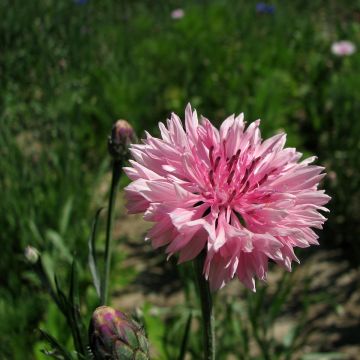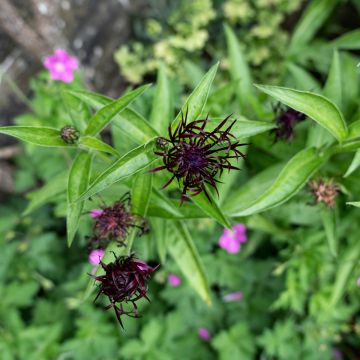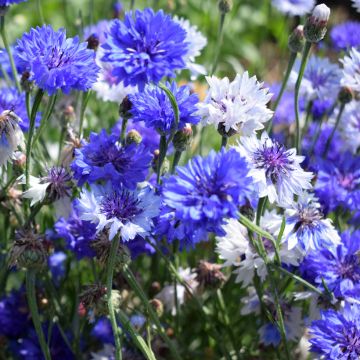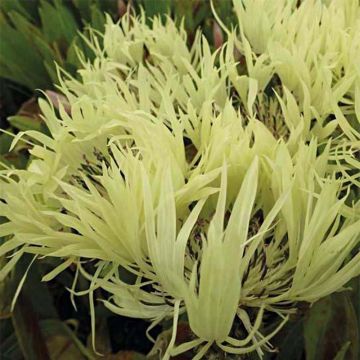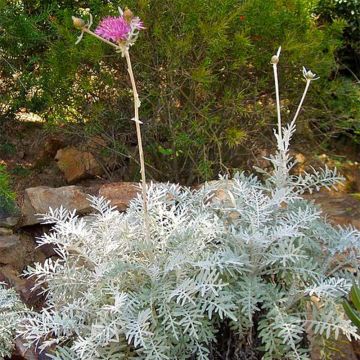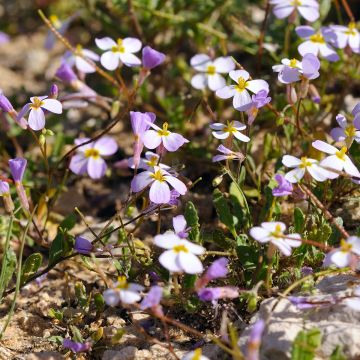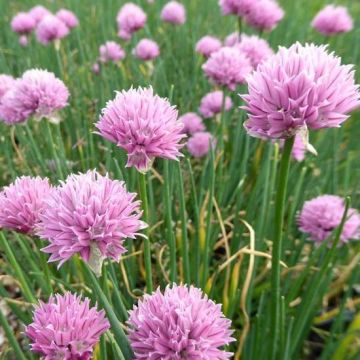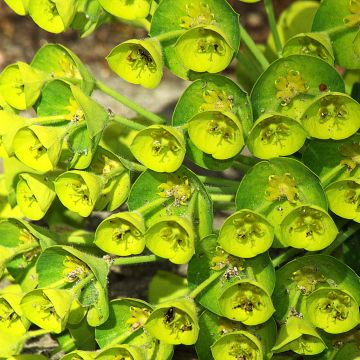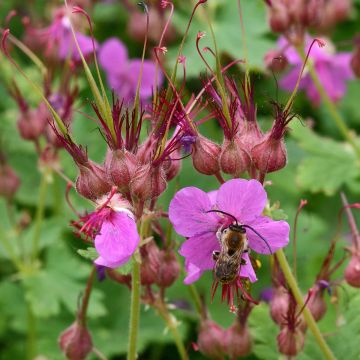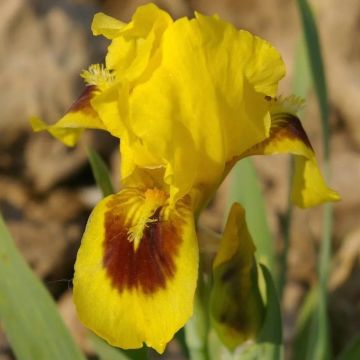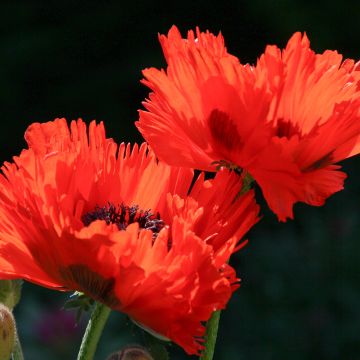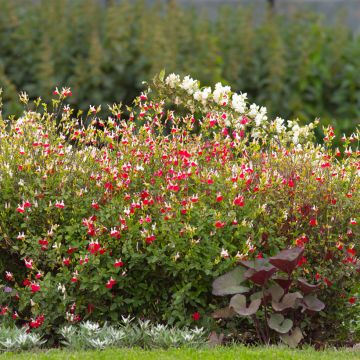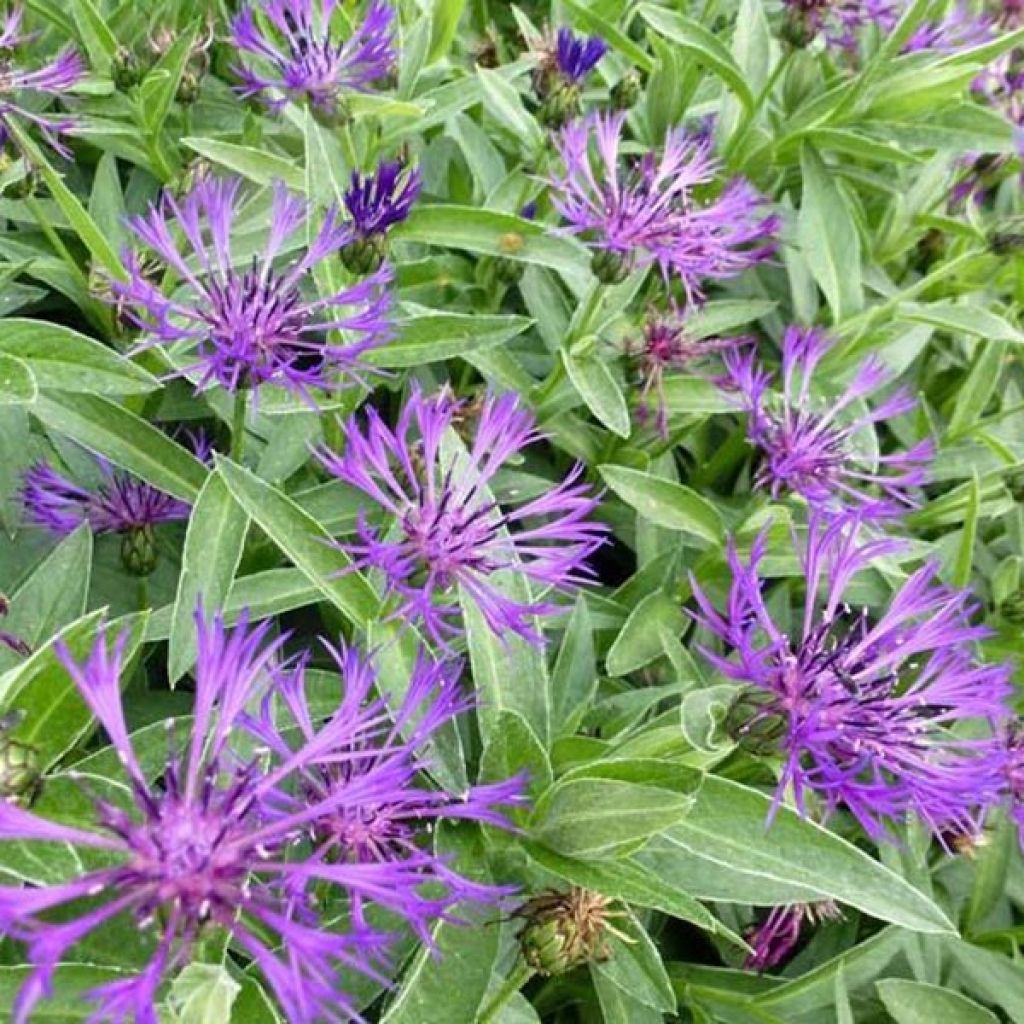

Centaurea montana Violetta
Centaurea montana Violetta
Centaurea montana Violetta
Perennial Cornflower, Great Blue-bottle, Mountain Bluet, Mountain Centaury
Neck received in perfect condition I went directly to collect the parcel once it arrived at the collection point so that the young plants do not suffer too much. Careful packaging Young plant in bud or already starting to emerge after a week. Only thing left to see is if they withstand the frost well this winter and I will be delighted.
Delphine, 22/04/2022
This item cannot be shipped to the selected country
Delivery charge from €5.90
More information
Schedule delivery date,
and select date in basket
This plant carries a 12 months recovery warranty
More information
We guarantee the quality of our plants for a full growing cycle, and will replace at our expense any plant that fails to recover under normal climatic and planting conditions.
From €5.90 for pickup delivery and €6.90 for home delivery
Express home delivery from €8.90.

Does this plant fit my garden?
Set up your Plantfit profile →
Description
Centaurea montana 'Violetta' is a selection of perennial cornflower that stands out due to its distinctly violet flowers and beautiful vigour. Equally robust as its wild ancestor, this perennial forms beautiful tufts of green-grey and woolly foliage, which blooms happily between May and July depending on the region. The perennial cornflower enjoys both sun and partial shade, tolerates ordinary and even limestone soil, and thrives best in moist soil.
Spontaneous in the mountains of Europe, Centaurea montana is a herbaceous perennial plant of the Asteraceae family that develops from trailing rhizomes. Hardy, easy and undemanding, this ornamental and medicinal plant has been cultivated for a long time in all gardens.
The 'Violetta' selection, from which it originates, has identical foliage, pubescent, giving it a woolly appearance, especially on the underside of the leaves. The foliage is deciduous, it disappears in winter. In the case of dry summers, it can also dry out, but will regenerate with the first watering or rain. This Violetta variety forms spreading clumps that quickly spread on the ground, with the leafy stems spreading out. It reaches 40 to 50 cm (16 to 20in) in flower, 25 cm (10in) for the foliage, and spreads on the ground thanks to its trailing rhizomes. Its leaves are 5 to 6 cm (2in) long, lanceolate in shape, and their colour is a green tinged with grey. The flowering takes place from May to July, earlier or later depending on the region, and continues for several weeks as long as the soil remains somewhat moist. It takes the form of large, spreading flowers which are a bright violet colour on upright stems. It is a melliferous plant producing high-calorie pollen, highly appreciated by pollinating insects, especially bumblebees.
The perennial cornflower needs no introduction, as it is an excellent and adaptable perennial plant with robust qualities, whose blue flowers have adorned many gardens for centuries. It grows everywhere, in heavy or light soils and in sun or shade. Coming back into fashion, cornflowers are returning with infinitely refined new colours. 'Violetta' is a pretty plant, easy to associate in rockeries or in borders with other small, trouble-free perennials such as euphorbias, Iberis and dusty millers, alyssums and aubrietas, and even late red, white or pink tulips. It can be planted along borders, pathways, or lawns, and is perfect for creating lovely wildflower bouquets or drying its heads, which remain attractive for a long time.
Report an error about the product description
Centaurea montana Violetta in pictures
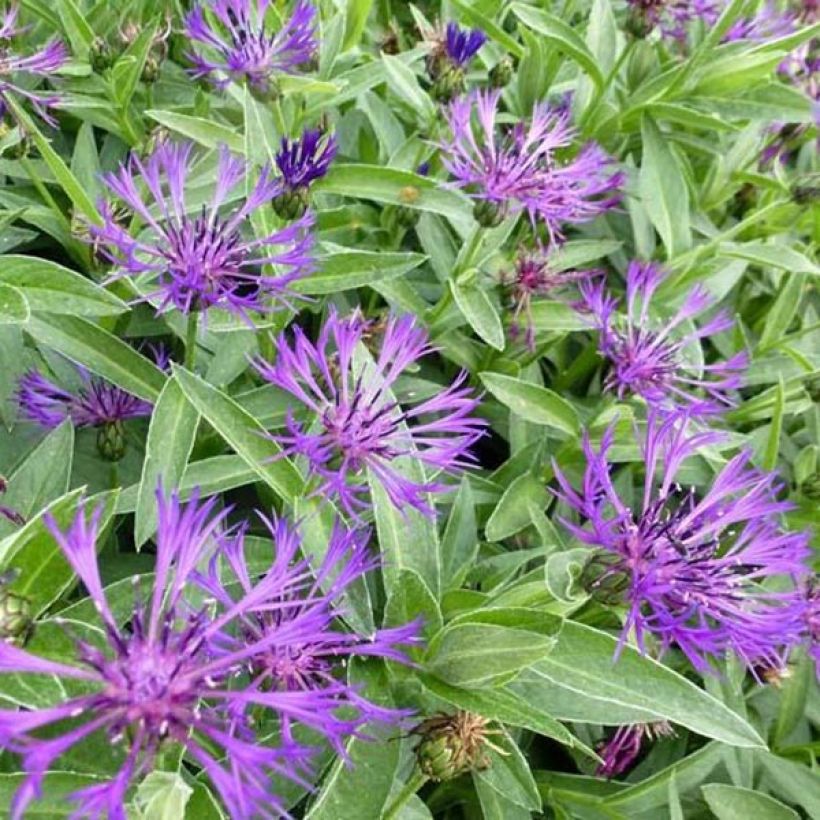

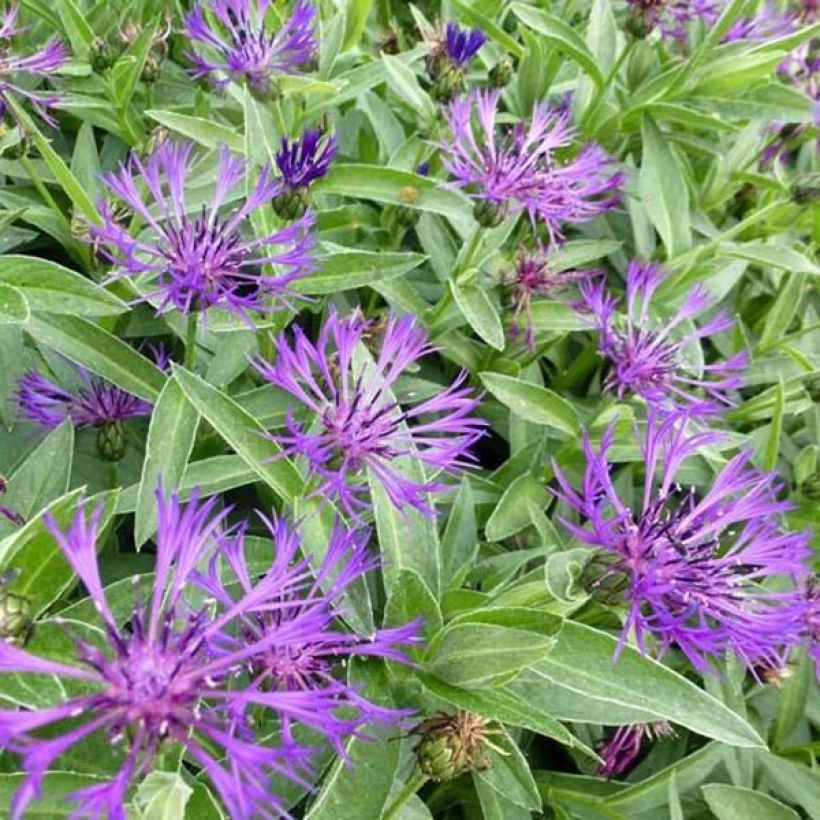

Flowering
Foliage
Plant habit
Botanical data
Centaurea
montana
Violetta
Asteraceae
Perennial Cornflower, Great Blue-bottle, Mountain Bluet, Mountain Centaury
Cultivar or hybrid
Other Centaurea
Planting and care
Plant Centaurea montana 'Violetta' in ordinary, preferably well-drained soil, even clay or limestone or poor soil, in full sun or partial shade. It tolerates heavy and moist soils but prefers stony or occasionally dry soils. Water it well at planting and maintain regular watering for the first 8 weeks. After flowering, cut back the flower stalks to the ground, to encourage a second flowering in late summer.
Planting period
Intended location
Care
-
, onOrder confirmed
Reply from on Promesse de fleurs
Spring flowering perennials
Haven't found what you were looking for?
Hardiness is the lowest winter temperature a plant can endure without suffering serious damage or even dying. However, hardiness is affected by location (a sheltered area, such as a patio), protection (winter cover) and soil type (hardiness is improved by well-drained soil).

Photo Sharing Terms & Conditions
In order to encourage gardeners to interact and share their experiences, Promesse de fleurs offers various media enabling content to be uploaded onto its Site - in particular via the ‘Photo sharing’ module.
The User agrees to refrain from:
- Posting any content that is illegal, prejudicial, insulting, racist, inciteful to hatred, revisionist, contrary to public decency, that infringes on privacy or on the privacy rights of third parties, in particular the publicity rights of persons and goods, intellectual property rights, or the right to privacy.
- Submitting content on behalf of a third party;
- Impersonate the identity of a third party and/or publish any personal information about a third party;
In general, the User undertakes to refrain from any unethical behaviour.
All Content (in particular text, comments, files, images, photos, videos, creative works, etc.), which may be subject to property or intellectual property rights, image or other private rights, shall remain the property of the User, subject to the limited rights granted by the terms of the licence granted by Promesse de fleurs as stated below. Users are at liberty to publish or not to publish such Content on the Site, notably via the ‘Photo Sharing’ facility, and accept that this Content shall be made public and freely accessible, notably on the Internet.
Users further acknowledge, undertake to have ,and guarantee that they hold all necessary rights and permissions to publish such material on the Site, in particular with regard to the legislation in force pertaining to any privacy, property, intellectual property, image, or contractual rights, or rights of any other nature. By publishing such Content on the Site, Users acknowledge accepting full liability as publishers of the Content within the meaning of the law, and grant Promesse de fleurs, free of charge, an inclusive, worldwide licence for the said Content for the entire duration of its publication, including all reproduction, representation, up/downloading, displaying, performing, transmission, and storage rights.
Users also grant permission for their name to be linked to the Content and accept that this link may not always be made available.
By engaging in posting material, Users consent to their Content becoming automatically accessible on the Internet, in particular on other sites and/or blogs and/or web pages of the Promesse de fleurs site, including in particular social pages and the Promesse de fleurs catalogue.
Users may secure the removal of entrusted content free of charge by issuing a simple request via our contact form.
The flowering period indicated on our website applies to countries and regions located in USDA zone 8 (France, the United Kingdom, Ireland, the Netherlands, etc.)
It will vary according to where you live:
- In zones 9 to 10 (Italy, Spain, Greece, etc.), flowering will occur about 2 to 4 weeks earlier.
- In zones 6 to 7 (Germany, Poland, Slovenia, and lower mountainous regions), flowering will be delayed by 2 to 3 weeks.
- In zone 5 (Central Europe, Scandinavia), blooming will be delayed by 3 to 5 weeks.
In temperate climates, pruning of spring-flowering shrubs (forsythia, spireas, etc.) should be done just after flowering.
Pruning of summer-flowering shrubs (Indian Lilac, Perovskia, etc.) can be done in winter or spring.
In cold regions as well as with frost-sensitive plants, avoid pruning too early when severe frosts may still occur.
The planting period indicated on our website applies to countries and regions located in USDA zone 8 (France, United Kingdom, Ireland, Netherlands).
It will vary according to where you live:
- In Mediterranean zones (Marseille, Madrid, Milan, etc.), autumn and winter are the best planting periods.
- In continental zones (Strasbourg, Munich, Vienna, etc.), delay planting by 2 to 3 weeks in spring and bring it forward by 2 to 4 weeks in autumn.
- In mountainous regions (the Alps, Pyrenees, Carpathians, etc.), it is best to plant in late spring (May-June) or late summer (August-September).
The harvesting period indicated on our website applies to countries and regions in USDA zone 8 (France, England, Ireland, the Netherlands).
In colder areas (Scandinavia, Poland, Austria...) fruit and vegetable harvests are likely to be delayed by 3-4 weeks.
In warmer areas (Italy, Spain, Greece, etc.), harvesting will probably take place earlier, depending on weather conditions.
The sowing periods indicated on our website apply to countries and regions within USDA Zone 8 (France, UK, Ireland, Netherlands).
In colder areas (Scandinavia, Poland, Austria...), delay any outdoor sowing by 3-4 weeks, or sow under glass.
In warmer climes (Italy, Spain, Greece, etc.), bring outdoor sowing forward by a few weeks.



































